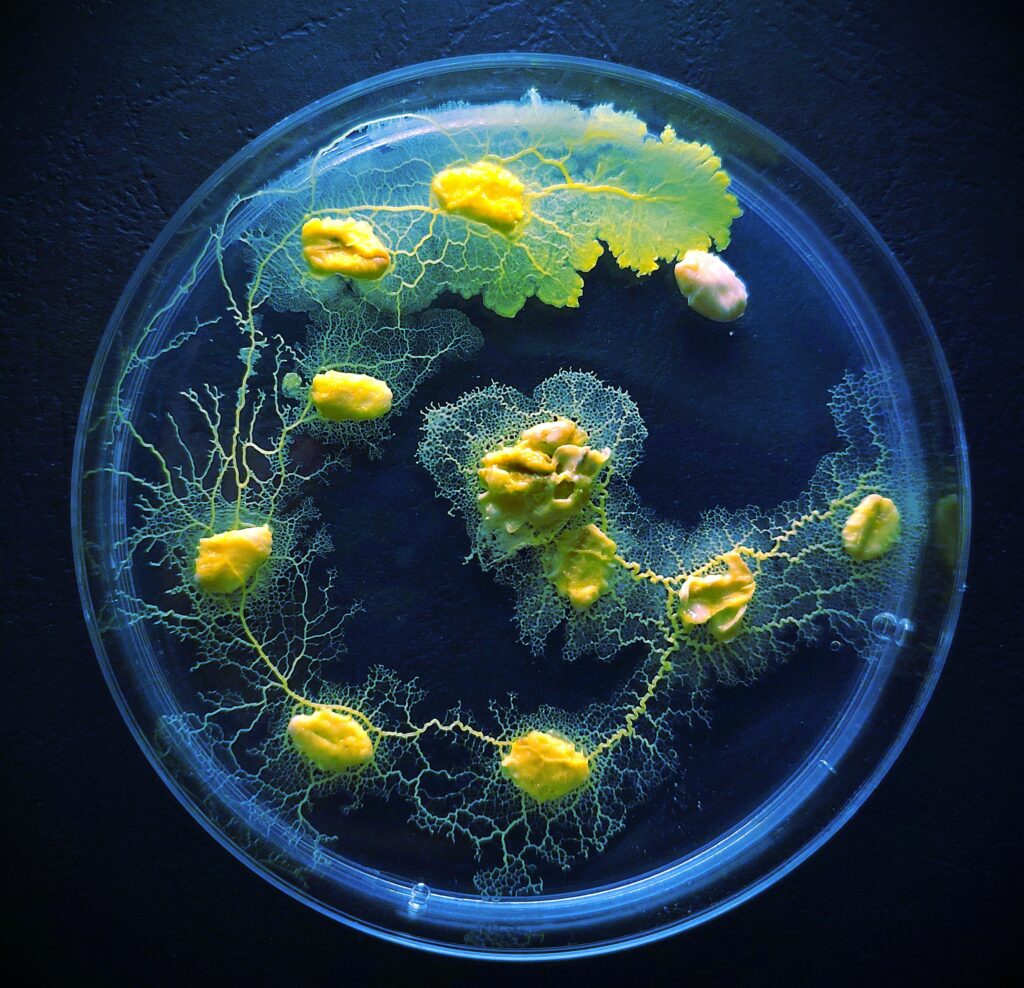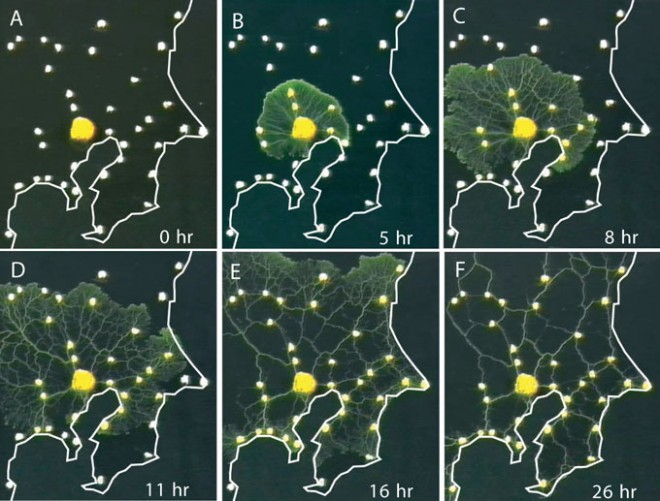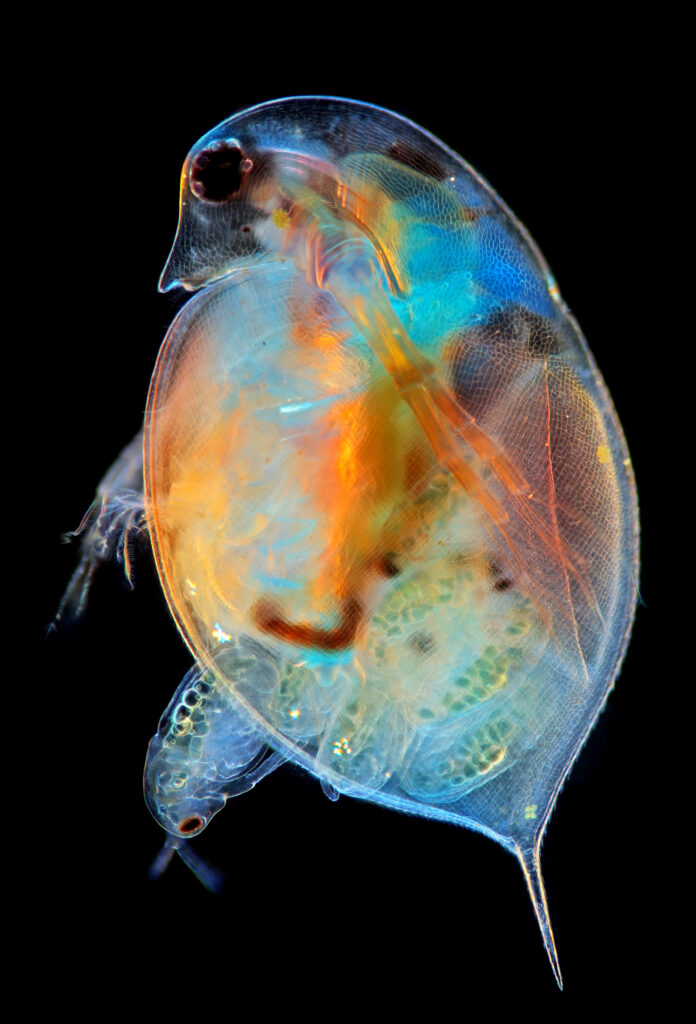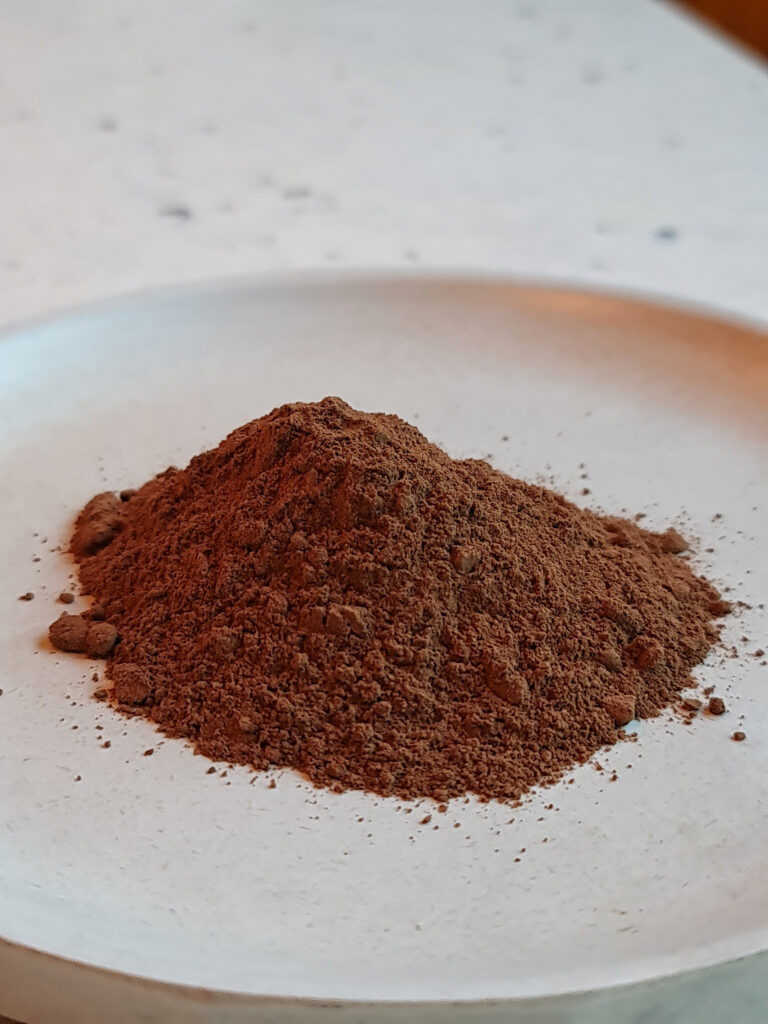Embracing a biophilic approach to computing could radically change the way we interact with technology and the world.

The world is not like a computer; computers are like the world.
This realization opens the door to all kinds of exciting and radically different possibilities for computation, which [British computer scientist Stafford] Beer barely anticipated but would probably have massively enjoyed. Many of these are grouped under the loose category of ‘unconventional computing’, which lives by the mantra that anything that can be done electronically can probably be done more interestingly with… well, anything else. Unconventional computing emerges from the same impulse as esoteric programming and attempts to perform in hardware–or wetware–the same kind of tricks as writing software in the style of a fictional orang-utan.
One of the stars of unconventional computing, a modern successor to Beer’s Daphnia, is the slime mould, itself a loose category of organism which scientists aren’t really sure where to place. One of the most noted characteristics of slime moulds is that they trouble the individual/group divide, existing some of the time as independent, single-celled organisms like Euglena, and at other times–particularly when food is scarce or conditions otherwise harsh–swarming together into clusters that operate collectively. In some cases these collectives fuse together to produce great sacks of cytoplasm filled with thousands of nuclei. When they want to reproduce, some parts of the collective form spores, which are picked up by the wind or animals; others sacrifice themselves to become non-reproductive infrastructure, the stalks and stems of the fruiting body. They have other tricks too. When separated, they can find their way back to one another and reconstitute. They can anticipate events: like Mimosa, they appear to retain a memory of unfavourable episodes, and react accordingly. Formerly classed as fungi, the slime moulds have, under close examination, taken on a kind of weird, communal individuality, and like the discipline of cybernetics itself they continually refuse to settle into a new domain.


In 2010, a slime mould called Physarum polycephalum revealed itself to be a highly effective city planner, when it recreated one of world’s most robust and efficient transport networks. The Japanese rail system is a masterpiece of complex engineering, involving decades of work by designers and planners, and reliant on complex trade-offs between cost, resources and geography. But when researchers placed oat-flakes–a Physarum delicacy–in the pattern of the cities surrounding Tokyo, and released the mould, the slime mould quickly reproduced their efforts. At first, it spread itself evenly across the map, but within a few hours it had started to hone its web of threads into a highly efficient network for distributing nutrients between distant ‘stations’, with stronger, more resilient trunk routes connecting the central hubs. This wasn’t a simple, join-the-dots exercise either, but a realistic map where patches of bright light–which Physarum dislikes–corresponding to mountains and lakes, required the mould to make the same kind of trade-offs that engineers have to implement. After a day of adapting itself to its environment, the resemblance to an actual map of Greater Tokyo was unmistakeable.
Calculating efficient routes is a notoriously hard problem in mathematics. One of the most famous and thorny versions of it is known as the travelling salesman problem. It’s a deceptively simple riddle: given a list of some widely distributed cities and the distances between them, what’s the shortest route to visit each one, only once, and return home?
Despite hundreds of years of mathematicians attacking the problem, and huge investments made by logistics companies and postal services, there’s no guaranteed way to figure out the best answer to this riddle, however you frame it. Worse, as more cities are added to the list, the problem gets exponentially harder, because the number of options multiply. This explosive growth in possible solutions is a huge problem for mathematical algorithms, which can get lost in a maze of deadÂ-ends and bad answers. For this reason, the travelling salesman problem is a classic example of a problem that a Universal Turing Machine–the a-machine–cannot reliably solve. It’s computationally undecidable. And what did we say about undecidability? It must be time for the o-machine.
“In short, the slime mould easily completed a task that the most powerful computers in the world—and humans—absolutely suck at.”
In 2018 the same slime mould, Physarum polycephalum, showed that it was able to solve the travelling salesman problem in linear time, meaning that as the problem increased in size, it kept making the most efficient decisions at every juncture. Using the same method as the Tokyo rail experiment, researchers at Lanzhou University in China placed scraps of food in the place of cities and used beams of light to keep it from repeating connections. They showed that the mould took only twice as long to solve a map of eight cities as it did to solve a map of four cities–despite there being almost a thousand times more possible routes. In short, the slime mould easily completed a task that the most powerful computers in the world–and humans–absolutely suck at.
The idea that biological systems could not only replace but outperform many of the operations of computers–which already outperform human abilities–fits with our proposition that computers are like the world, rather than the other way around. But in order to actually absorb this realization, we need to perform the same kind of mental flip that we did when speaking of fungal networks and the internet, or man-made and animal intelligence. Systems of intelligent, computational ability–mycorrhizal networks, slime moulds and ant colonies, to name a few–have always existed in the natural world, but we had to recreate them in our labs and workshops before we were capable of recognizing them elsewhere. This is technological ecology in practice. We need the mental models provided by our technology, the words we make up for its concepts and metaphors, in order to describe and properly understand that analogous processes are already at play in the more-than-human world.
“Systems of intelligent, computational ability… have always existed in the natural world, but we had to recreate them in our labs and workshops before we were capable of recognizing them elsewhere.”
In 1971, the American physicist Leon O. Chua proposed the idea of a novel electronic component which he called a ‘memristor’. The memristor is a resistor with memory, which makes it capable of remembering its own state–retaining data–even when it’s without power. If memristors were used inside computers, they would collapse the storage processor division which is common to all modern computers and vastly increase their efficiency and power, transforming computation in the process. But in the 1970s, it wasn’t clear how you might go about building a memristor–and in any case, existing transistors and silicon chips were still so new and exciting that they were much more attractive to researchers and engineers. It wasn’t until 2008 that a team at Hewlett-Packard actually figured out how to build one, and although memristors still promise to revolutionize the ways computers function, they remain a laboratory curiosity.
That said, the idea of the memristor, like the idea of a scale-free, electronic network, has stimulated extraordinary work in biology. Again, it was Physarum polycephalum, the slime mould, which led the way. Researchers in the Unconventional Computing Laboratory at the University of the West of England, led by Professor Andrew Adamatzky, have shown that Physarum exhibits memristor-like behaviour: when charged with certain voltages, it exhibits the same behaviour in subsequent tests. In other words, it remembers its previous state, like a memristor. In this way, it should be possible to build a radically fast and efficient computer out of slime moulds, laid down on a substrate just like a silicon chip.


Since the realization that slime mould can act as a memristor, we’ve found this to be true of many other organisms. The Venus flytrap, Aloe vera, and another old friend, Mimosa pudica, have all been shown to display memristic behaviour. In fact, it seems increasingly clear that all living plants, as well as the skin, blood and sweat ducts of animal bodies (including our own), are potential memristors. It remains only to figure out how to integrate such structures into our technology in order to devise new kinds of computers, which might surpass in capability all the machines we’ve built to date.
To do so would advance the current state of computation exponentially. Nonetheless, they would at heart still be the same kind of computers: the same old Turing machines with a very different architecure. What if–rather than asset-stripping other organisms for their useful components, treating them as so many spare parts for our machines–we instead incorporated them wholesale and, beyond that, started to see the environment itself as part of our computational substrate?
…
All computers are simulators. They contain abstract models of aspects of the world, which we set in motion–and then immediately forget that they’re models. We take them for the world itself. The same is true of our own consciousness, our own umwelt. We mistake our immediate perceptions for the world-as-it-is–but really, our conscious awareness is a moment-by-moment model, a constant process of re-appraisal and re-integration with the world as it presents itself to us. In this way, our internal model of the world, our consciousness, shapes the world in the same way and just as powerfully as any computer. We attempt to make the model more like the world, and the world more like the model, at every step of our intra-action. This is why models and metaphors matter. If our internal model contains a vision of a shared world, a communal, participatory world; if it acknowledges the reality of our more-than-human entanglements; and if we’re prepared to adapt our vision to new circumstances and new realizations, then it has–we have–the potential to actually make the world a more communal, more participatory, more just and equal, and more-than-human place.
This excerpt has been reproduced with kind permission from the author and Penguin Random House.
